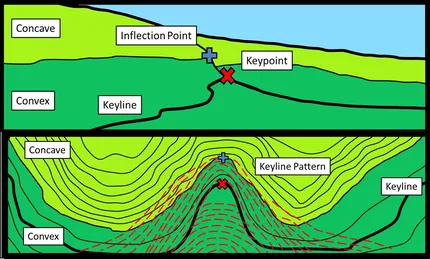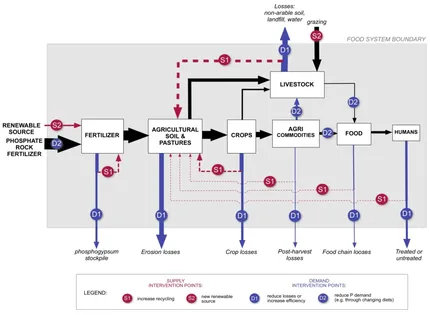Table of Contents
- Water Retention & Drainage
- Nitrogen Lockup
- Anaerobic Environment
- Pests
- Pathogens From Diseased Wood
- Final Thoughts
- Continued Reading
* Our articles never contain AI-generated slop *
If you're getting into hügelkultur, you'll want to make sure to avoid these common hügelkultur mistakes to ensure maximum success in your garden.
The following mistakes are some of the most common that gardeners encounter while attempting hügelkultur.

If you learn from these, you can avoid most pitfalls and save yourself time and frustration as you learn how to make this resourceful method work for you on your land.
Disclaimer: This post may contain affiliate links. Refer to the privacy policy for more information.
Water Retention & Drainage
One of the most common hügelkultur problems you can face is is water retention.
Carbonaceous material can absorb a lot of water, especially wood chips.
Keep in mind here that hügelkultur is essentially a compost pile beneath your plants, and that compost is generally not watered as much as garden plots because they can easily become too bioactive.
If you're going to be decomposing big chunky material under your plants, it's important to make sure your drainage is adequate and things aren't becoming anaerobic.
Just like a compost pile, too much water can mean too much bioactivity - evidenced by pests and smells.
Join The Grower's Community
Find your people.
Your voice matters here 🌱
Check It Out!
Some of the best options here are open-bottom planters and raised beds, and adding sand, perlite, or rock dust to help improve the drainage.
You can also consider setting up your hügelkultur on a slope - ever so slighly with increased drainage on the downslope side to help excess water drain.
Bonus points for the minerals which sand and rock dusts add - these will help your hügelkultur beds thrive for many years to come.
Be especially mindful if you're in a very wet climate to add more of these drainage-improving grit / mineral additions to really help break up the absorbant carbon aggregates.
Nitrogen Lockup
Another issue with hügelkultur is the potential for the woody carbonaceous material to lock up nitrogen from the soil. This is temporary, but can cause issues for years if there is not enough nitrogen to counteract this.
The thing to remember here is simply that carbon needs to be balanced out with nitrogen. Filling a bed or plot with logs, branches, wood chips, and cardboard makes for a very carbon-heavy bed.
This carbon must be counteracted with some nitrogen.
You do not need nearly as much nitrogen by volume as carbon, but adding coffee grounds, grass clippings, green leaves, food waste, tea leaves, hedge trimmings, and other fresh forms of nitrogen will be required to counterbalance the carbon.
If you don't have enough nitrogenous material available, a bag of alfalfa meal is a great inexpensive source you can buy.
Anaerobic Environment
This can happen if your nitrogen content is too high (the opposite of the nitrogen lockup issue mentioned above), or if oxygen has a hard time permeating your hügelkultur beds.
Soil environments without adequate structure may turn anaerobic, causing overgrowth of the types of bacteria that you don't want in your garden.
Too many food scraps, or nitrogen-heavy additions which are very dense may swing your beds towards becoming anaerobic. Be sure to properly balance out any nitrogen additions with adequate volumes of carbonaceous material in order to prevent overactive beds.
Create layers "lasagna"-style to ensure a good balance throughout. Remember that you'll need far more carbonaceous "browns" than nitrogenous "greens", by volume.
I would aim for 5:1, 10:1, or even 20:1 browns-to-greens, which is heavier on the carbon than you might commonly use in your compost pile. This will help slow the decomposition a bit more than an active pile, to allow for plants to thrive and heavier watering to be possible.
Remember that the more nitrogenous material you add, the faster the decomposition rate - and the more oxygen is needed to keep the environment aerobic where "good" bacteria can thrive.
It's also a great idea to layer in sand, perlite, rock dust, or even fine gravel if you live in a wet climate and need to ensure your hügelkultur beds drain fast enough that they don't stay waterlogged for extended periods of time.
Pests
Pests can be an issue with new hügelkultur projects, especially if you go heavy on the food scraps and nitrogenous materials:
Rodents
If you use a lot of fresh food scraps in your hügelkultur build as a nitrogen source, you may encounter rodents digging in the beds - especially in the first year before things have a chance to break down.
Try to layer any food scraps between woody carbonaceous material, and avoid concentrated spots of just food scraps if rodents are a concern.
Avoid meat and dairy in your beds, which are better broken-down in hot campost piles designed te heat up to higher temperatures.
Dig Cool Merch?
We've got guides on dealing with a few common types of rodents in the garden here:
Slugs and Snails
Slugs and snails also love decomposing organic matter, and may take an interest in your hügelkultur beds.
Check out our guide on dealing with slugs and snails for tips.
Pathogens From Diseased Wood
While hügelkultur is a great way to make use of all the scrap wood, logs, branches, and trimmings you have from trees and shrubs, there is also the possibility that some wood may be diseased and cause the spread of pathogens into your new bed(s).
As a general rule you should avoid wood that you know to be diseased.
That said, many diseases and blights which affect trees may not affect other plants, often targeting only one species - so discernment is your best bet here.
Do your research if any of the wood which you plan to add has issues, and get a positive ID on the problem and what species it afflicts to be sure you're in the clear before adding it.
When in doubt, leave in out.
Final Thoughts
Remember that hügelkultur can take some trial-and-error to get right, and you'll need to account four your climate and local conditions to ensure success.
You don't have to know it all from the start, though, you just have to be willing to experiment and leave the possibility of making mistakes open - that's how you learn.
Don't get too attached to the outcome of your first attempt, you can always try a hügelkultur bed as an experiment to learn and see what happens - and then build more or rebuild the first with your increased knowledge and experiance as you learn.
Continued Reading
If you'd like to learn more about hügelkultur and how to get started, check out our comprehensive guide to hügelkultur.
That's all for now, thanks for reading!
If you have any questions, comments, or would like to connect with fellow gardeners, head on over to the forum and post there.







![Don't Till Away Your Carbon [Taffy]](/media/product_images/dont-till-away-your-carbon-[taffy]_sticker_260x260.png)














![Black Dirt Live Again [Green] Sticker](/media/product_images/black-dirt-live-again-[green]_sticker_260x260.png)







